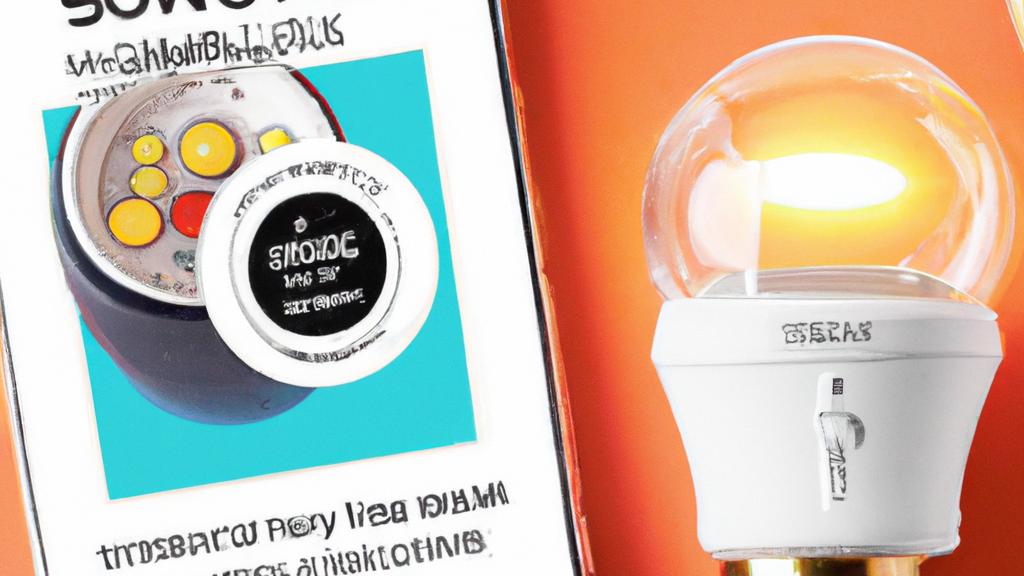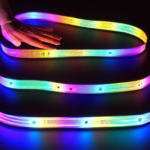
Introduction: The convenience of smart home technology
Technology has made our lives more convenient in ways we couldn’t have imagined only a few years ago. Smart home technology, in particular, has revolutionized the way we manage our homes. From controlling the thermostat to securing the doors and windows, smart technology empowers us to manage every aspect of our homes remotely. In the realm of lighting, smart bulbs offer a level of convenience and control that traditional lighting can only dream of. With the ability to schedule, dim, and change color, smart bulbs are the next step in our home lighting evolution. In this article, we’ll explore the benefits of using smart bulbs for home lighting and how they can upgrade your home.
What are smart bulbs?
Smart bulbs are light bulbs that can be controlled using a smartphone, tablet, or smart home device. They are often connected to your home Wi-Fi network and use an app to control their settings. Unlike regular light bulbs, smart bulbs can be scheduled to turn on or off, dimmed, and even change color to fit your mood and preferences. Most smart bulbs also work with voice assistants like Amazon Alexa and Google Assistant, allowing you to control them with simple commands. Smart bulbs are available in different types, including LED, CFL, and halogen, and come in a variety of shapes and sizes, making them suitable for any light fixture in your home. Overall, smart bulbs are a convenient and easy way to upgrade your home’s lighting system.
Benefits of using smart bulbs in your home
Using smart bulbs in your home has several benefits that can enhance your lighting experience. One significant advantage of smart bulbs is that they are energy-efficient, consuming significantly less energy compared to traditional light bulbs. They also have a longer lifespan, which translates to cost savings in the long run. Additionally, smart bulbs allow you to control the brightness and color temperature of the light emitted, helping you to create a comfortable and warm environment in your home. With a smart bulb, it’s easy to change the lighting according to your mood, schedule, or activity – whether you’re cooking, reading, watching a movie, or getting ready for bed. Smart bulbs also offer a level of convenience that traditional bulbs can’t match. You can set them to turn on or off automatically, saving energy when not needed, or control them from a distance using your smartphone or smart home device. In conclusion, smart bulbs offer several benefits that can help you save energy, create an ambiance, and make your life easier and more comfortable.
How to choose the right smart bulbs for your needs
Choosing the right smart bulb for your needs is essential to ensure that you get the most out of your investment. One crucial factor to consider is the type of bulb you need. LED smart bulbs are the most energy-efficient and have a longer lifespan. They also emit less heat, making them safer to use. Another key factor is the level of integration with your smart home ecosystem. If you are already using a smart home hub or device, you should choose a bulb that can integrate with it seamlessly. Consider the compatibility of the bulbs with popular voice assistants such as Amazon Alexa and Google Assistant, which will allow you to control your lights using simple voice commands. Also, ensure that the bulbs are easy to set up and use, with an intuitive app that makes it easy to change the settings and customize your lighting preferences. Finally, consider the brightness and color temperature range of the bulb to ensure that it suits your lighting needs. In summary, to choose the right smart bulb for your needs, consider factors like energy-efficiency, integration with your smart home ecosystem, ease of use, compatibility with voice assistants, and brightness and color temperature range.
Setting up and integrating smart bulbs into your home
Setting up and integrating smart bulbs into your home is a simple process that requires only a few steps. The first thing you need to do is choose a smart bulb that fits your needs and follow the instructions that come with it. Most smart bulbs use a mobile app that you can download from the app store to set up and control your lighting. Next, connect the smart bulb to your home Wi-Fi network, usually by entering your network credentials in the app. Once connected, you can start customizing your lighting preferences, such as brightness, color temperature, and scheduling. You can also integrate your smart bulb with your smart home ecosystem, such as Alexa or Google Assistant. This will enable you to control your lighting using voice commands and even create routines that automate your lighting. Another factor to consider when setting up and integrating smart bulbs is the placement of the bulb. Make sure that the bulb is in a suitable location and that it’s compatible with your existing light fixtures. Overall, setting up and integrating smart bulbs into your home is an easy process that can significantly upgrade your home lighting system.
Tips for maximizing the potential of your smart bulbs
To maximize the potential of your smart bulbs, there are several tips to keep in mind. First and foremost, take advantage of the scheduling feature to turn on and off your lights at specific times. This can help you save energy and reduce your electricity bill. You can also create routines that automate your lighting based on your daily activities. For example, you can set your lights to turn on automatically when you wake up or turn off when you go to sleep. Another tip is to use smart sensors that work with your smart bulbs. These sensors can detect motion and automatically turn on your lights when you enter a room and turn them off when you leave. You can also customize the brightness and color temperature of your lights to create different moods for different activities. For example, warmer tones for relaxation and cooler tones for concentration. Finally, consider integrating your smart bulbs with other smart home devices, such as smart switches, thermostats, and door locks. This will allow you to control all your devices through a single app or voice assistant, making your smart home even more convenient. By following these tips, you can maximize the potential of your smart bulbs and enjoy a smart lighting experience that’s tailored to your needs.
Conclusion: The future of home lighting
Smart bulbs are part of the ever-evolving smart home technology that has transformed the way we live. With their energy efficiency, convenience, and customization potential, smart bulbs are becoming a prevalent choice for homeowners looking to upgrade their lighting systems. The potential of smart bulbs goes beyond just lighting a home; they are also an essential component of the Internet of Things (IoT) that underpins the smart home. As more and more devices become connected, smart bulbs will become even smarter, with enhanced features and capabilities that will make them an even more integral part of the smart home. In conclusion, the future of home lighting is bright, thanks to the potential of smart bulbs and other smart home technology. Whether it’s energy efficiency, convenience, or customization, smart bulbs offer a range of benefits that make them an attractive choice for homeowners looking to upgrade their lighting systems and create a smarter home.





